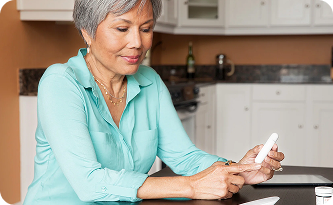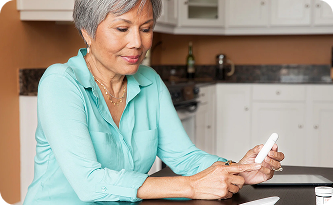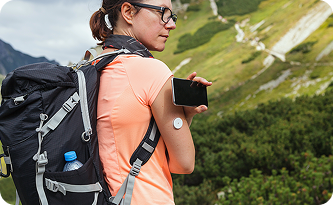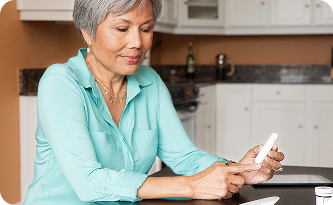Learn Your Way
to A Healthier Life
What We Learned From COVID—And How It’s Still Shaping Public Health - test

When it comes to managing your health, information is power—and your glucometer is one of the best tools to gather some personal health information. Whether you’ve just been diagnosed with diabetes or you’ve been managing it for years, there are times when starting (or re-starting) regular blood sugar checks can make a major difference.
What is Normal Blood Sugar?
If you've never checked your blood sugar before, you might be wondering what to look for when you start. Here are some simple guidelines for blood sugar targets throughout the day. If you have questions about your personal blood sugar, check in with your provider, or consider a visit with a Registered Dietitian or Diabetes Educator.
General Blood Sugar Targets
Based on American Diabetes Association guidelines, here are the blood sugar levels to look for when you check.
For people without diabetes:
- Fasting (before meals): 70–99 mg/dL
- 1–2 hours after meals: Less than 140 mg/dL
When Is It Time to Get a Glucometer?
1. You’ve Been Diagnosed with Prediabetes or Diabetes
The research shows that people who check their blood sugar, manage their diabetes better long-term. If you’ve recently been diagnosed with prediabetes or diabetes, it’s the perfect time to start checking your blood sugar at home. A glucometer gives you real-time feedback on how food, activity, stress and medications affect your numbers.
Think of your blood sugar meter like a GPS for your blood sugar—it helps you spot trends, prevent low blood sugars and avoid unexpected spikes. Plus, early monitoring can also help you and your healthcare provider make smarter decisions about your treatment plan. Be sure to write your numbers down or take your glucometer into your appointment so that you can review your numbers with your healthcare provider.
2. You’re Experiencing Unexplained Symptoms
Your body has a way of sending out warning signals when your blood sugar is out of balance. Feeling extra thirsty, running to the bathroom more often, feeling constantly tired or noticing blurry vision are just a few signs that your blood sugar could be running too high—or possibly too low
Think of any new symptoms or a change in symptoms like your body’s “check engine” light. When something feels off, it’s your body’s way of telling you it’s time to check under the hood. A blood sugar monitor can help you connect the dots between how you’re feeling and what’s happening inside your body
Tracking these symptoms alongside your blood sugar readings can help you and your healthcare provider spot patterns and make important adjustments before bigger health concerns arise.
How to Get Started (or Restart) with a Glucometer
- Choose a glucometer that’s easy to use and fits your lifestyle. iHealth offers reliable, user-friendly options that sync with your smartphone to make tracking effortless.
- Pick a few key times to check, like before breakfast and two hours after a meal.
- Keep a simple log or use an app to track your readings and look for patterns — many glucometers now do this automatically!
- Talk with your healthcare provider about your target numbers and what to do if your readings are too high or too low.

Gluco+ Wireless Smart Gluco-Monitoring System
Smart glucose monitoring. Fast. Effortless. Clinically trusted.
Explore your optionsSign Up For More From iHealth
Receive the Latest News and Special Offers
Sign Up For More From iHealth
Receive the Latest News and Special Offers

























